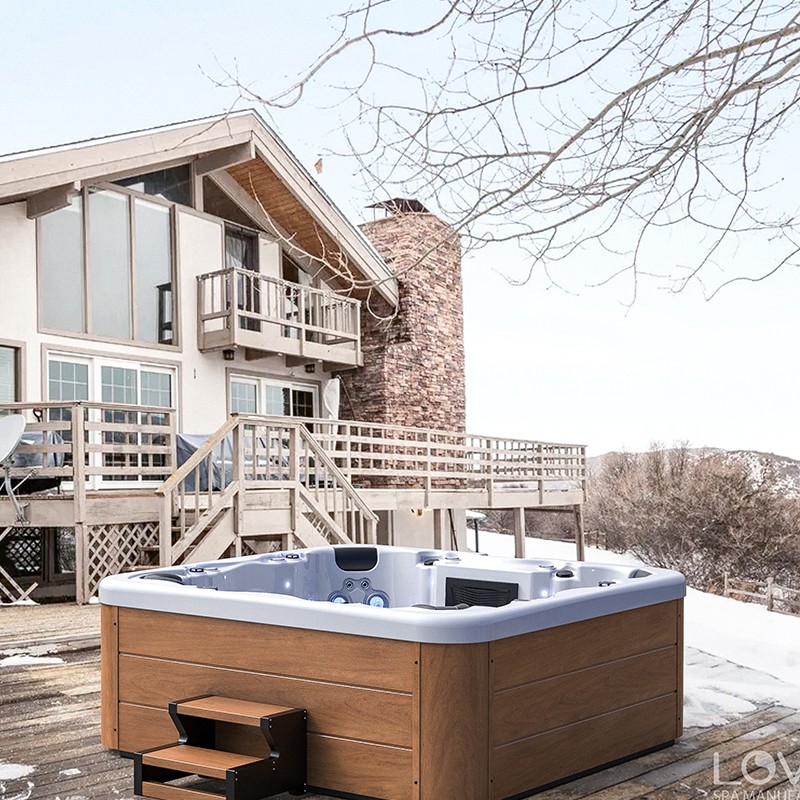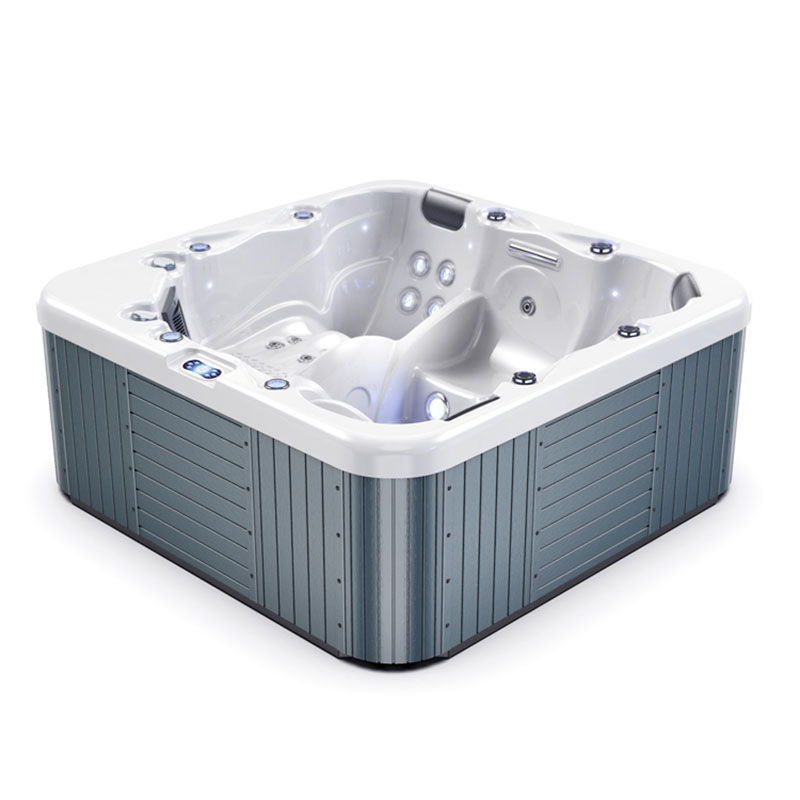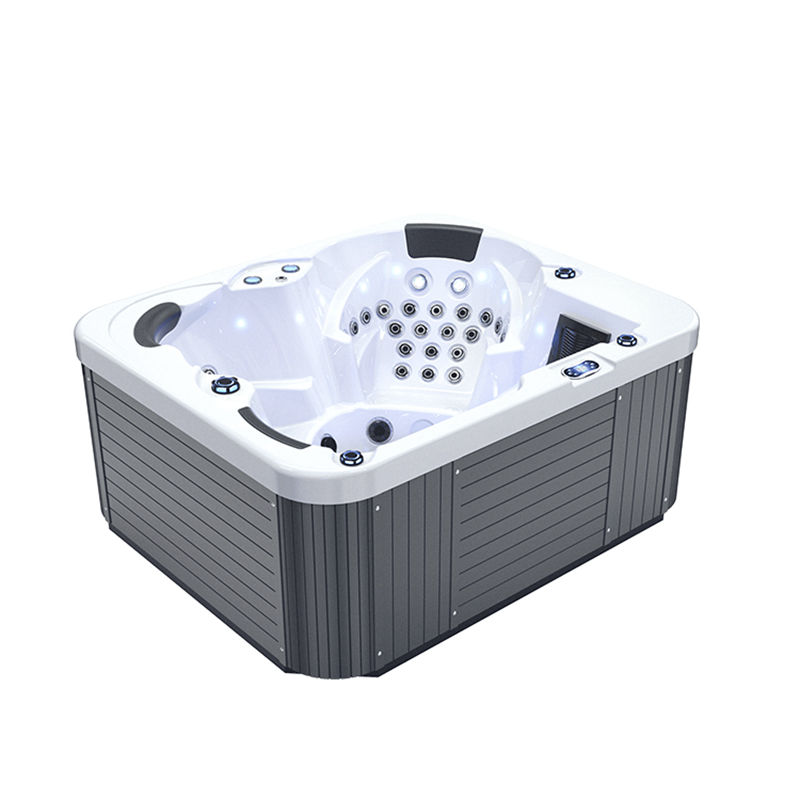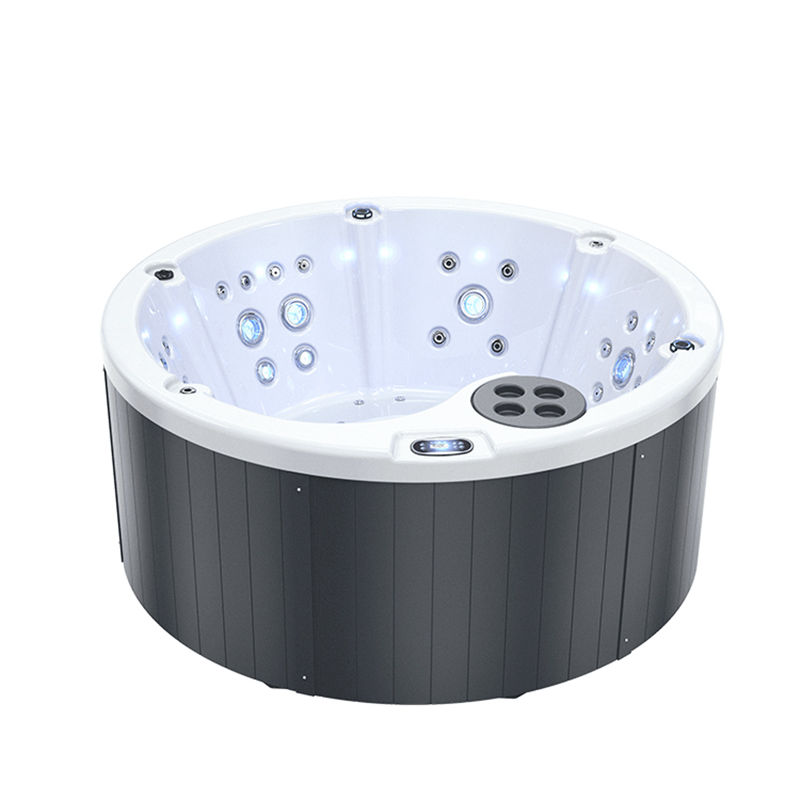The spa jacuzzi bathtub has become a staple in modern bathrooms due to its comfortable massage and relaxing properties. However, over time, many users encounter a serious problem: leaking spa jacuzzi bathtubs. Leakage not only affects the user experience but can also cause water damage to floors and the home environment, and even pose safety hazards such as electric shock.
This article will provide a professional analysis of the causes, troubleshooting, and solutions for spa jacuzzi bathtub leaks, as well as scientific measures to prevent water and electrical leaks, to help users effectively protect the device and their home.

What are the common causes of spa jacuzzi bathtub leaks?
A spa jacuzzi bathtub leak can stem from multiple sources, including the plumbing system, pump, valves, seals, and housing material. Understanding the cause of the leak is the first step in addressing it effectively.
1. Broken pipes or joints
A spa jacuzzi bathtub typically has a circulating water pipe, showerhead pipes, and a drain pipe. Over long-term use, pipes may develop the following problems:
• Aging or cracking: PVC or other plastic pipes gradually age over time and with changes in water temperature, becoming prone to cracking.
• Loose joints: If pipe joints are not tightened or the sealant deteriorates, increased pressure during use may cause leaks.
Leaks typically manifest as water seeping from the bottom, especially when the water is circulating.
2. Pump and valve problems
The pump and valves in a spa jacuzzi bathtub are responsible for water circulation and spraying. If the pump seals are poor or the valves are aged, bottom leaks may occur:
• Aging pump seals: Wear on the internal seals or shaft seals can cause pump leaks.
• Valve failure: Cracks or seal failure in the valve that controls water flow can also cause bottom leaks.
3. Cracks in the base or casing
The base of a spa jacuzzi bathtub is typically made of acrylic, fiberglass, or other composite materials. Cracks in the casing, especially from impacts caused by transportation, moving, or improper use, can cause bottom leaks.
4. Aging Sealing Materials
During spa jacuzzi installation, sealants or silicone sealants are typically used to seal the bottom pipes, nozzles, and housing. Over time, this sealant may crack or peel, allowing water to seep out.

Can a spa jacuzzi leak cause an electrical leak?
Spa jacuzzi bathtubs use electric pumps and heaters, so leaks can pose a safety hazard. However, leaks do not necessarily mean an electrical leak. A professional analysis is provided below:
1. Spa jacuzzi bathtub electrical system protection
Modern spa jacuzzi bathtubs typically use residual current devices (RCDs)/GFCIs. Once a leakage is detected, the system automatically shuts off power, preventing electric shock.
Electrical components are typically waterproof, such as the pump body, motor housing, and heater housing, which have IP ratings to minimize the risk of water contacting electricity.
2. Conditions where water leaks increase the risk of an electrical leak
• Water directly contacting exposed wires or damaged electrical components can cause an electrical leak.
• Old bathtubs or unprofessionally installed electrical wiring are more susceptible to electrical leakage due to water seepage.
Therefore, bottom leaks should be addressed promptly. Even if there's no immediate risk of electric shock, they can pose a long-term safety hazard.

How to locate a spa jacuzzi bathtub bottom leak?
Accurately identifying the leak is key to addressing it. Here are the professional troubleshooting steps:
1. Turn off the power and drain the water
For safety reasons, first turn off the power, then drain the spa jacuzzi bathtub to ensure there's no risk of electric shock during operation.
2. Check for cracks in the bottom casing
• Use a flashlight to inspect the bottom casing and base for obvious cracks or signs of water seepage.
• For acrylic, gently press on the bottom to check for softening or denting.
3. Check pipes and joints
• Check the pump inlet and outlet pipes, showerhead pipes, and drain pipe connections for water seepage.
• Gently tighten the joints or check for loose sealant. • Use a dry cloth to absorb water. Run the circulation pump and observe if water leaks from the connections.
4. Inspect the pump body and valves
• Check the pump body bottom and shaft seal for leaks.
• Check the control valve for aging, cracks, or looseness.
5. Inspect the sealing materials
• Use a magnifying glass or touch to check for cracks or loose sealant or silicone.
• Focus on the bottom pipe connection, pump connection, and showerhead pipe connection.
A step-by-step inspection will pinpoint the leak location and provide a basis for subsequent treatment.
Treating a spa jacuzzi bathtub bottom leak
Depending on the cause of the leak, appropriate measures can be taken:
1. Troubleshooting Pipe or Joint Leaks
• Aged or cracked pipes: It is recommended to replace the pipes with high-temperature-resistant PVC or pressure-resistant plastic pipes.
• Loose joints: Disassemble the joints and reapply sealant or rubber rings to ensure they are securely fastened.
• For subtle leaks: Apply transparent silicone sealant along the leak and let it cure for 24 hours.
2. Pump or Valve Leakage Treatment
• Deterioration of pump seals: Disassemble the pump and replace the seals or shaft seal.
• Cracked valves: Replace the valve or apply sealant as a temporary solution, but replacing a new valve is recommended for long-term repairs.
• Note: Always disconnect the power supply when handling the pump to avoid the risk of electrical leakage.
3. Base or Casing Crack Treatment
• Small cracks can be sealed with specialized acrylic adhesive or fiberglass repair compound.
• For large cracks or structural damage, contact a professional for repair and replacement of the base or casing.
4. Deterioration of Sealing Materials
• Remove deteriorated sealant or silicone and thoroughly clean the bottom joints and gaps.
• Reseal with waterproof silicone and allow it to dry and cure for 24 hours before refilling the bathtub.
5. Leakage Prevention Measures
• Ensure the bathtub power line is equipped with a residual current device (RCD/GFCI).
• Check the waterproofing of electrical components and ensure the pump, motor housing, and heater are free of damage.
• After resolving a leak, manually check the bottom with a dry cloth to ensure it is dry before reenergizing the device.

Daily Maintenance for Spa Jacuzzi Bathtub Leaks
After resolving a leak, to prevent further leaks and reduce the risk of electrical leakage, we recommend establishing the following maintenance system:
1. Regularly inspect pipes and pumps
• Quarterly check pipe connections for looseness and pump seals for deterioration.
• Inspect valves and drainage systems to ensure smooth water flow and no water stagnation.
2. Regularly replace sealants
• Replace the bottom sealant every 2-3 years, especially in high-temperature and high-humidity environments, as it is prone to deterioration.
3. Electrical System Safety Inspection
• Check the operating status of the leakage protection switch every six months.
• Check the pump, motor, and heater housings for damage.
• Ensure the bathtub power supply wiring is located away from water leaks.
4. Usage Precautions
• Avoid placing heavy or sharp objects on the bottom to reduce the risk of damage to the exterior.
• When moving the bathtub, avoid impacting the base and pipes.
• Keep the bottom of the spa jacuzzi dry. If not used for an extended period, drain the tub to prevent moisture.
FAQ
Will a leak in the bottom of a spa jacuzzi immediately cause an electrical leak?
Not necessarily. Modern spa jacuzzi electrical systems often have leakage protection, but leaks can still pose a potential risk and must be addressed promptly.
Can I fix a leak myself?
• Minor cracks or aging sealants can be replaced.
• If the pipes are cracked or the pump or valve is damaged, contact a professional for safety reasons.
How can I determine if a leak affects electrical safety?
• Turn off the power, drain the tub, and check for water seepage.
• Check the electrical components for water intrusion.
• Verify that the leakage protection switch is functioning properly.
How can Purchasing managers ensure your Quotes are competitive?
We prepare detailed Quotes that break down Prices, shipping terms, customization costs, and warranty details. Buyers can compare our Quotes against other Suppliers and see the advantage of dealing directly with a Manufacturer and Factory. Our Prices are competitive, often paired with Promotions or Discounts for Wholesale Purchasing.




